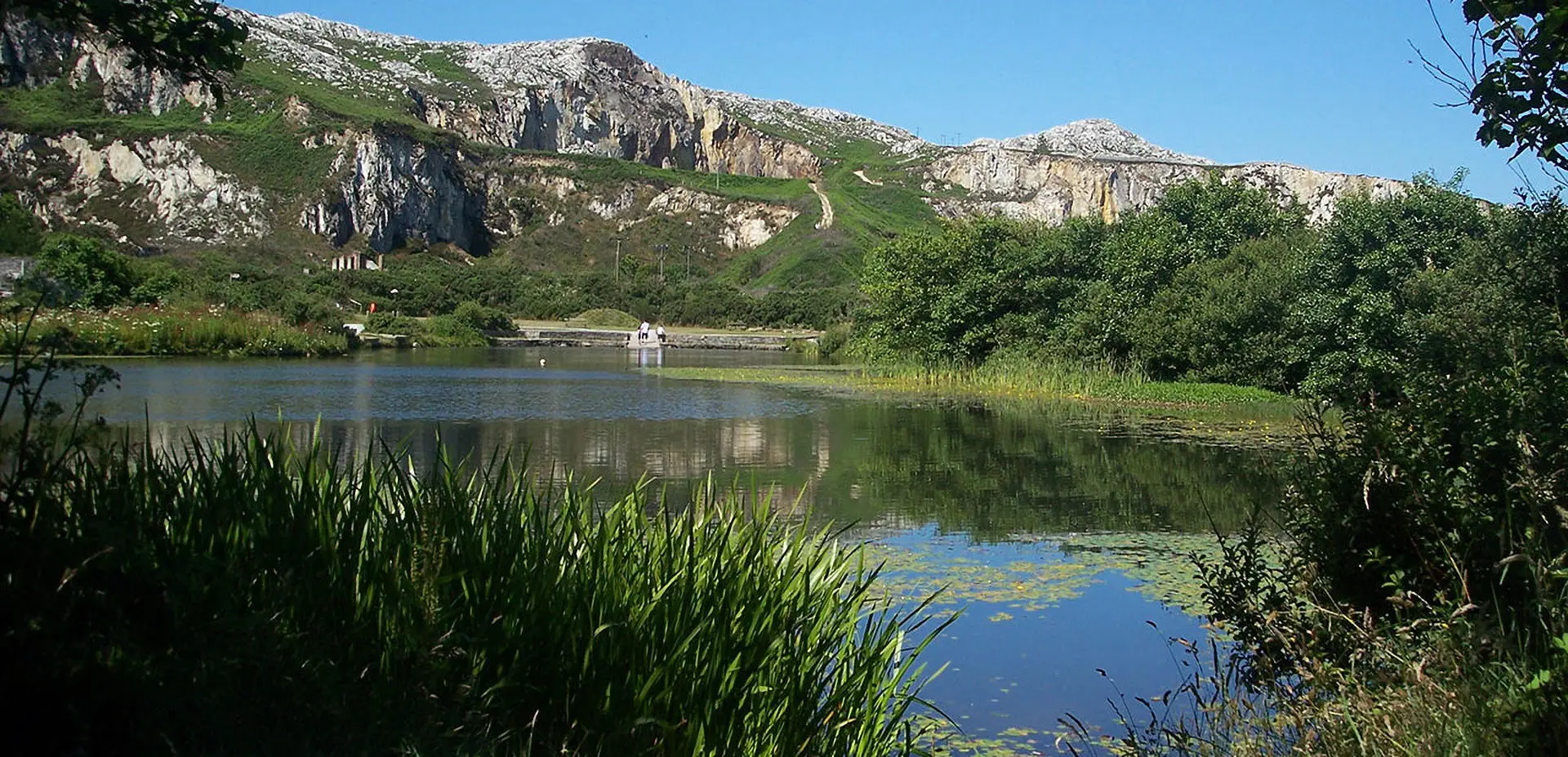Begin your day at Green Flag award-winning Holyhead Breakwater Country Park, a mile or so west by minor road from Holyhead. Once a quarry producing stone for the breakwater that shields Holyhead’s busy port, it has been reborn as a peaceful haven for all kinds of wildlife.
The park is laced with a network of paths and nature trails. As you go, you might spot peregrines and choughs diving from their nests in the former quarries, plus herons, moorhens and mallards foraging in the lakes and ponds. Along the coastal heathland, bees and butterflies are drawn by blooms of rare orchids and vibrant pink thrift, while leaping pods of dolphins and porpoises can sometimes be seen offshore.
From the park, head back into Holyhead itself, before following South Stack Road west on a minor road towards the coast on the other side of Holyhead Mountain. Here you’ll find the craggy cliffs of South Stack, a multi-storey metropolis of birdlife. The RSPB centre at Ellin’s Tower is the perfect place to spot huge colonies of guillemots, puffins, razorbills and choughs (plus the swooping peregrines who prey on them).
If you have time (and you’re feeling energetic) it’s worth traversing the 400 steps down the cliffs to visit South Stack Lighthouse. Perched on a little island linked to the mainland by a footbridge, it’s an iconic Anglesey landmark with spectacular views along the cliff-edged coastline and out to sea.
Alternatively, take a walk along the Wales Coast Path/Anglesey Coastal Path to North Stack (about 4 miles/6.5km there and back) for more stunning sea views and soaring seabirds.
Follow the minor road south-east along the coast to Trearddur Bay, picking up the B4545 for Valley for lunch.
Return to Trearddur Bay (its’s only 3 miles/5km) to end your day at Porth Diana North Wales Wildlife Trust Nature Reserve (park at Ravenspoint Road and take a short walk along the bay to the reserve). Made up of grass and heathland, it’s a habitat for unusual species of plants like spotted orchids, yellow flag iris and pink ragged robin (as well as a small herd of grazing coastal ponies).

